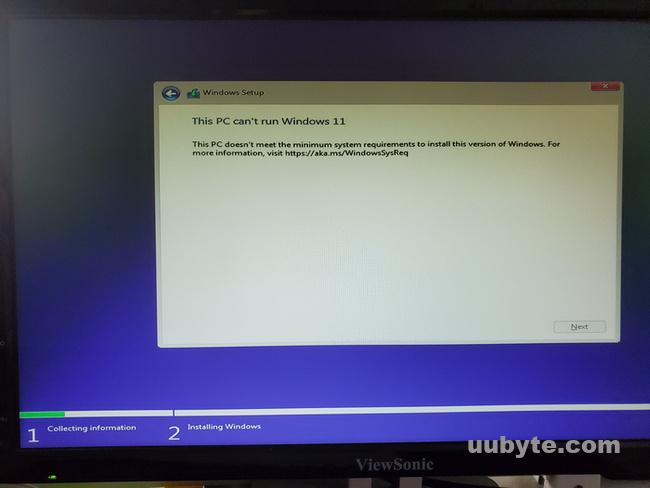Table of Contents
In generate, older computers does not have UEFI and TPM chip because these technologies were not commonly used at the time of manufacturing. Therefore, if you are planning to install Windows 11 on an old PC, it is important to check the system’s hardware requirements.
If the computer lacks UEFI and TPM, please don’t worry! There are a couple of workaround to help you bypass TPM and UEFI during Windows 11 installation.
Introduction to UEFI and TPM
UEFI is a modern firmware interface that has replaced the traditional BIOS on most modern computers. It is a firmware interface that is responsible for initializing the hardware components of the computer and booting the operating system.
UEFI is designed to provide a more flexible and extensible firmware interface compared to BIOS. It supports larger disks, faster boot times, and more secure booting by using digital signatures to verify the authenticity of firmware and operating system code.
TPM (Trusted Platform Module) is a specialized hardware chip that provides a secure storage space for cryptographic keys, as well as other security-related data. TPM is used to enhance the security of computers and other devices, particularly in the areas of authentication and encryption.
TPM is typically included on the motherboard of a computer or other device, and is designed to be tamper-resistant. It stores cryptographic keys in a secure, isolated space that is inaccessible to other components of the system. This means that even if an attacker gains access to the system, they will not be able to access the sensitive data stored in the TPM.
Does Windows 11 Require UEFI and TPM?
System Requirements for Windows 11 Installation
So what are the system requirements for Windows 11 standard installation? Here are mandatory requirements listed by Microsoft:
Processor: The computer must have a compatible 64-bit processor with at least 1 GHz clock speed and 2 or more cores.
RAM: The computer must have at least 4 GB of RAM.
Storage: The computer must have at least 64 GB of storage space.
System Firmware: The computer’s firmware must support UEFI (Unified Extensible Firmware Interface) version 2.0 or later.
Secure Boot: The computer’s firmware must have Secure Boot capability.
TPM: The computer must have a TPM (Trusted Platform Module) version 2.0.
Graphics Card: The computer’s graphics card must support DirectX 12 or later, with a WDDM 2.0 driver.
Display: The computer must have a display with a resolution of at least 720p and 9-inch diagonal size.
Internet Connection: An active internet connection is required for Windows 11 installation and activation.
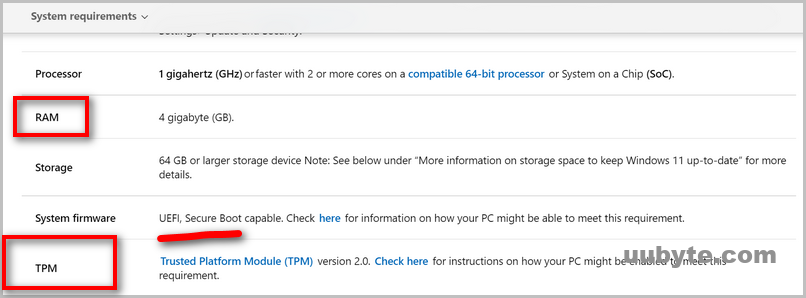
Can We Bypass TPM and UEFI for Windows 11?
By default, the old PC won’t be able to run Windows 11 If it does not meet these requirements. However, there are some tricks to help you install Windows 11 on an unsupported PC without UEFI and TPM. We will share three different approaches to get through the installation process.
Method 1: Use a Custom Windows 11 ISO
The stand Windows 11 installation requires the computer to have TPM and UEFI by default. However, we can bypass this limitation with a custom Windows 11 ISO, which is a modified version of the original Windows 11 OS that includes additional features, tweaks, or modifications to the operating system. This type of ISO is created by users to meet specific needs.
Custom Windows 11 ISO can be created using specialized software or tools that allow users to customize various aspects of the installation process, such as adding or removing pre-installed apps, changing the default settings, or integrating specific drivers or software.
Download this custom Windows 11 ISO that removes UEFI and TPM requirements from here:
https://drive.google.com/drive/folders/1ihtPAztUJ-b5wJER-vulTd556YoAuUZW
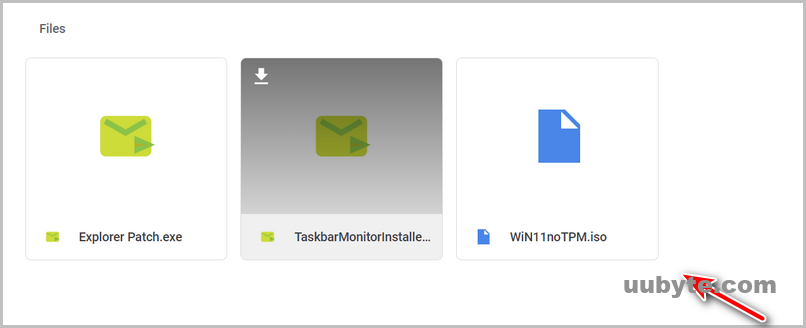
Install and Download UUByte ISO Editor, one of the best tools to create Windows 11 bootable USB on a PC or Mac.
Plug in a USB flash drive and open the app and click the Burn menu at the top.
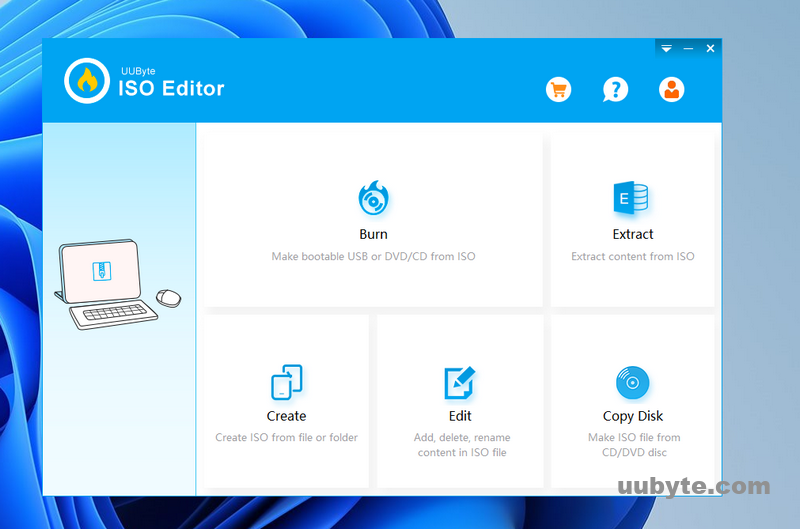
After that, import the custom Windows 11 ISO, pick up the USB drive and click the Burn button to make a Windows 11 installation disk.
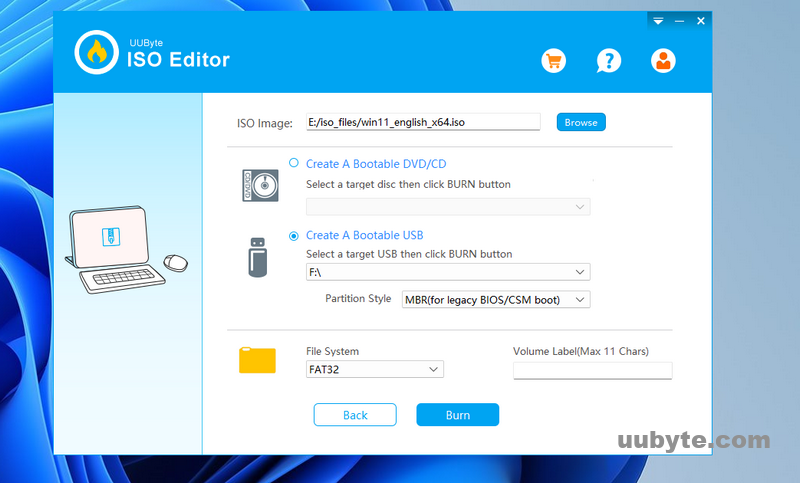
Once it is completed, connect the bootable drive to your old PC and boot from it.
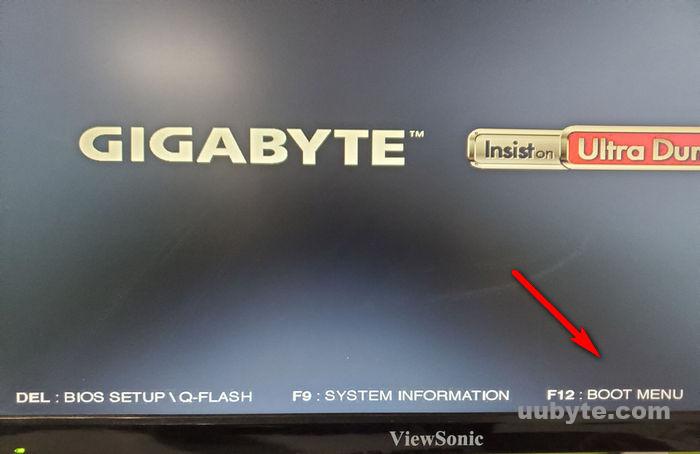
Finally, follow the prompts to install Windows 11 on old PC without TPM and UEFI. No warning message at this time!
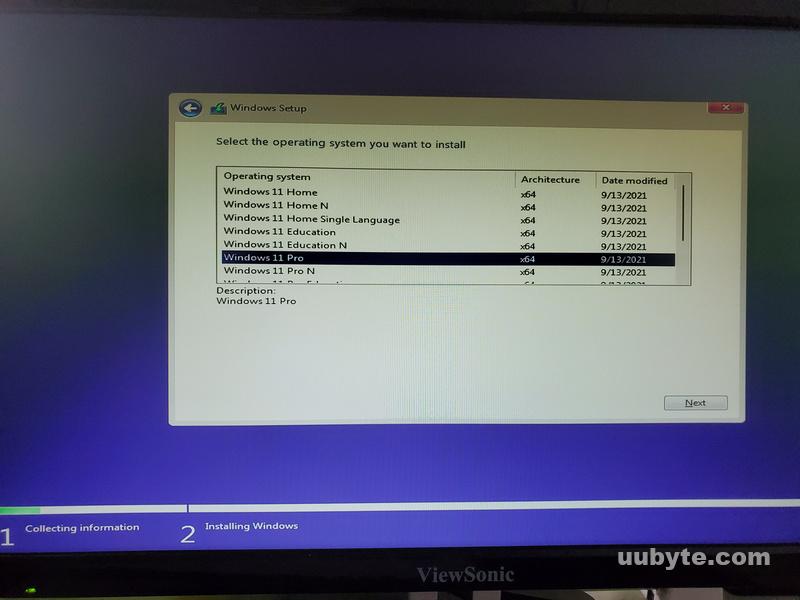
Method 2: Bypass Windows 11 UEFI and TPM Check Using Rufus
Rufus is a free and open-source utility tool that enables users to create bootable USB drives for various operating systems. With Rufus, users can create bootable USB drives from ISO, IMG, and DD image files. It also supports various file system formats, including FAT32, NTFS, and UDF. Additionally, Rufus allows users to customize their bootable USB drives, such as creating a custom label, changing the cluster size, and creating a persistent storage partition.
Rufus is easy to use, and it has a user-friendly interface. It is a lightweight tool that can run on any computer without requiring installation. Rufus is also known for its fast operation speed and reliable performance, making it a popular choice among users who frequently create bootable USB drives.
if you are determined to install Windows 11 on unsupported hardware, you can follow these general steps:
1. Download the Windows 11 ISO file from Microsoft’s website.
2. Download Rufus 3.16 from here. The new version does not come with bypass options.
3. Insert a USB flash drive with at least 8 GB of storage capacity into your computer.
4. Open Rufus and select the USB flash drive under "Device" and select Extended Windows 11 Installation under Image option.
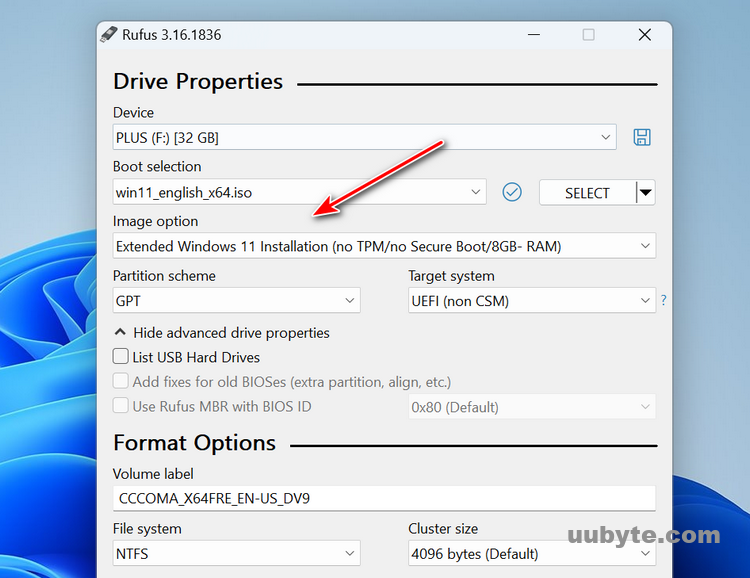
5. Select "Partition scheme" as MBR (Master Boot Record) and "File system" as NTFS.
6 .Click on the "Select" button next to "Boot selection" and choose the Windows 11 ISO file that you downloaded earlier.
7. Click on the "Start" button to create a bootable USB drive with Windows 11. Once the process is complete, restart your computer and boot from the USB drive.
8. Follow the on-screen instructions to install Windows 11 on unsupported hardware.
Method 3: Bypass Windows 11 UEFI and TPM Check Using Ventoy
Ventoy is known for its fast operation speed, reliability, and versatility. It allows users to store multiple operating systems on a single USB drive, making it convenient for users who frequently install and test different operating systems. Ventoy also provides additional features, such as secure boot and persistence, which enable users to save their data and settings across different sessions.
With Ventoy, users can create a multi boot USB drive by simply copying the ISO files of the operating systems to the USB drive, without requiring any additional steps such as formatting or partitioning. Ventoy will automatically detect the ISO files and display them on the boot menu when the USB drive is inserted into a computer.
To create a bootable USB drive with Ventoy that byass UEFI and TPM:
1. Download Ventoy from the official website (https://www.ventoy.net/en/index.html) and extract the contents to a folder on your computer.
2. Insert your USB drive into your computer and make sure that it is empty or that you have backed up any important files on it.
3. Open the folder where you extracted Ventoy and run the Ventoy2Disk.exe file as administrator.
4. In the Ventoy window, select your USB drive from the drop-down list at the top.
5. Click on the "Install" button to start the installation process. This will erase all data on the USB drive, so make sure that you have backed up any important files before proceeding.
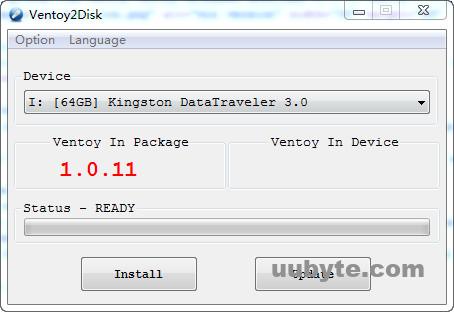
6. After the installation is complete, you will see a message saying "Installation Done". Now, copy Windows 11 ISO files that you want to use to the USB drive and edit ventoy.json file.
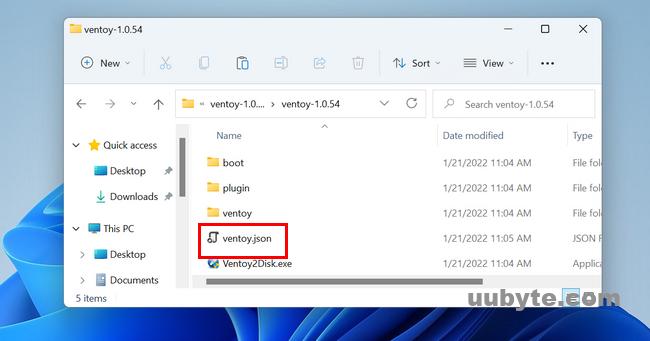
7. Add the following text to the end of tetx file:
"VTOY_WIN11_BYPASS_CHECK": "1"
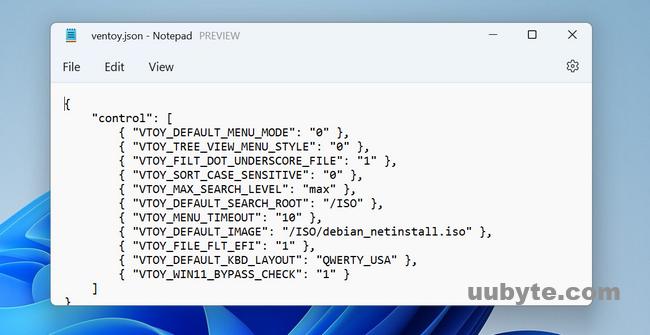
The above parameter indicates Ventoy bypassing Windows 11 system check during installation.

Eject the USB drive safely and you’re done!
YouTube Tutorial: How To Install Windows 11 Without UEFI And TPM 2.0
Summary
Thanks to the technology world, you can now install Windows 11 on any PC even it does not meet all the requirements. For beginners, the first method is much easier to go with as it does not require any advanced knowledge. Rufus is the second on our recommendation list as there are issues with UEFI. Ventoy is good but it is more suitable for tech savvy.
